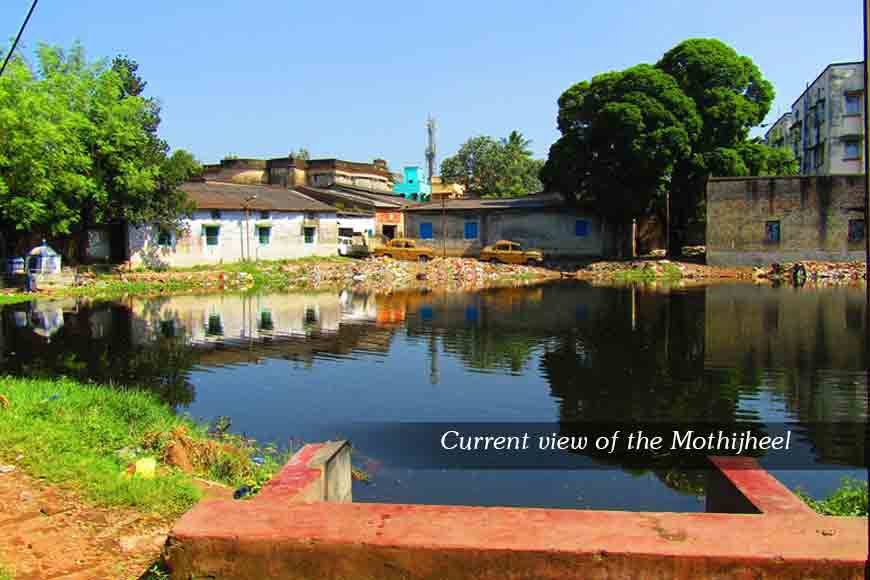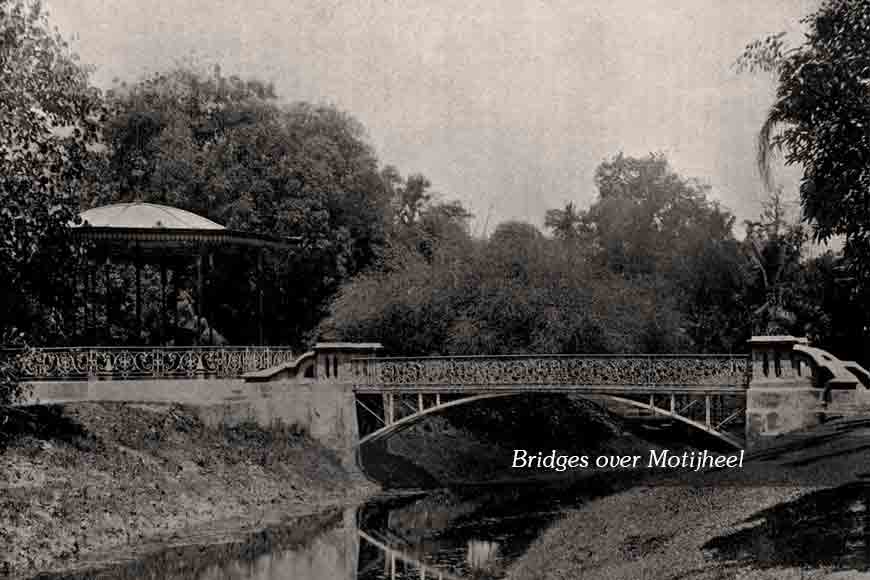‘Royal Fish’ in ‘Royal Oil’ at Belgachhia Villa!

The babus of Paikpara took a big step in spreading and popularising Bengali Theatre in 19th century Kolkata. Raja Pratap Chandra, Ishwar Chandra Sinha and Sir Jyotindra Mohan Tagore were great patrons of Belgachhia Theatre Hall where they helped in staging great performances…. Why the Tagore family sold off Belgachhia villa…. Continued….
I sat at the ghat and tried reminiscing the old pictures of the villa. Be it Dwarakanath’s Panshy or the decorated bridge to cross the pond. During those times, noted engineer Sarat Chandra Sinha of this family, was a stalwart in photography. It is believed most of the old photographs of Paikpara Rajbari were probably clicked by him.
The pond is huge. We can call it a jheel. The kings used to farm fish in this huge waterbody. But since they were Vaishnavas and vegetarians, they never killed or ate the fish. But they did give permission to fishermen to catch fish from the jheel. There used to be king’s men, whose sole duty was to oversee this pond fishing. Once the fishermen arrived, the officials would also come up and take stock of what they caught, the varieties and number of their catch throughout the day.

The usual practice at the Rajbari every evening was a grand meal of luchi and sweets. Everyone at the palace could enjoy this meal as evening snacks. But the benevolence of the kings of Belgachhia Villa did not end here. They also considered the data of how many fish was caught throughout the day and accordingly those who got a large catch would get ‘Mustard Oil’ from the palace’s oil mills for free. The kings believed, since the fish was caught from the Rajbari’s pond, so the oil should also come from the palace’s own oil mills. After all, royal fishes need to be cooked in royal oil!
However, today as I get up from the ghat, I witness the neglect that surrounds this area. Belgachhia Villa has been listed as a heritage site under Kolkata Corporation, primarily because of its theatrical heritage. But who will bring back its lost sheen? Today, it stands just as a mute witness to its lost glory!
(A heritage and wildlife enthusiast, Amitava Purakayastha works as consultant in the social development sector)










